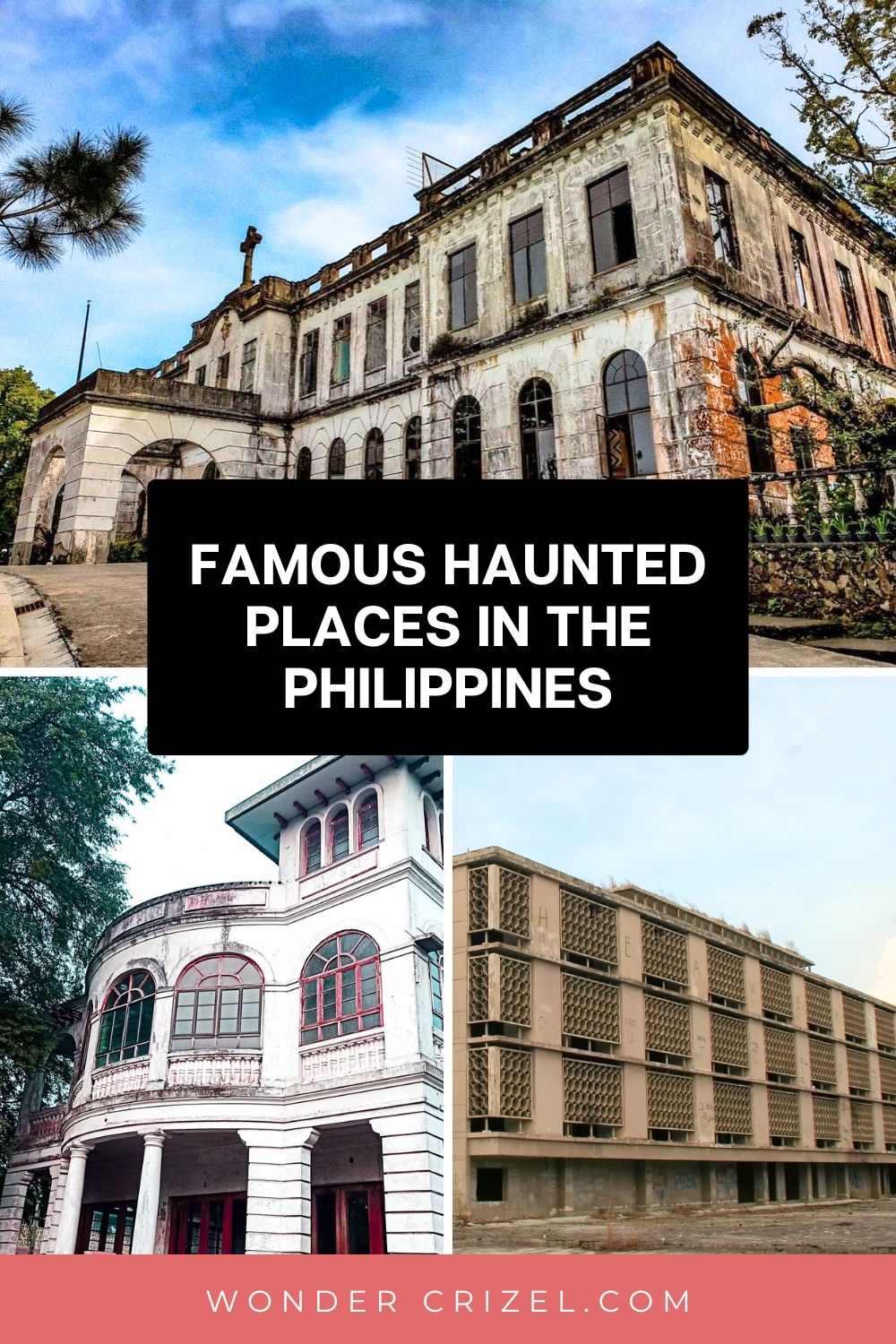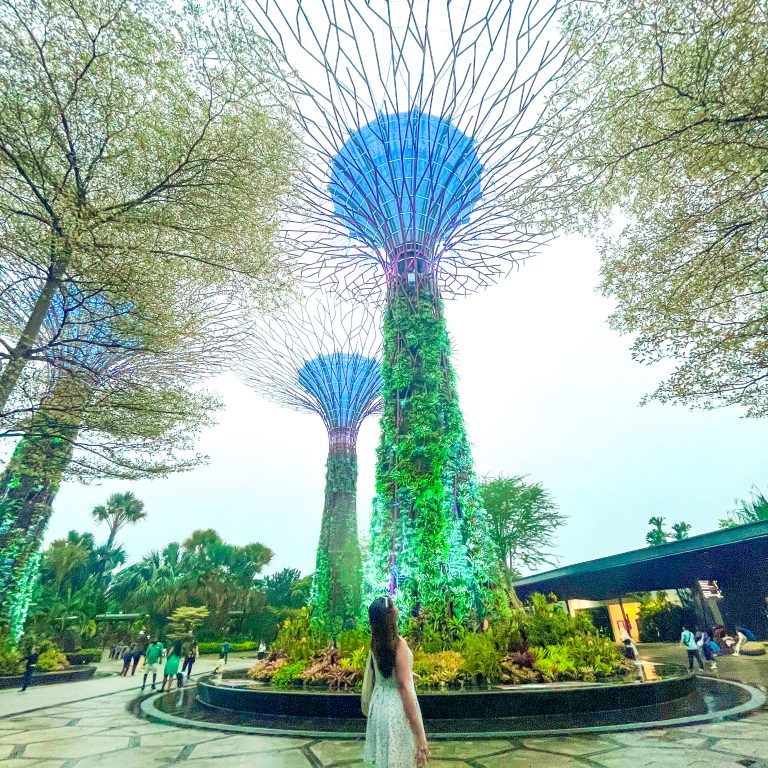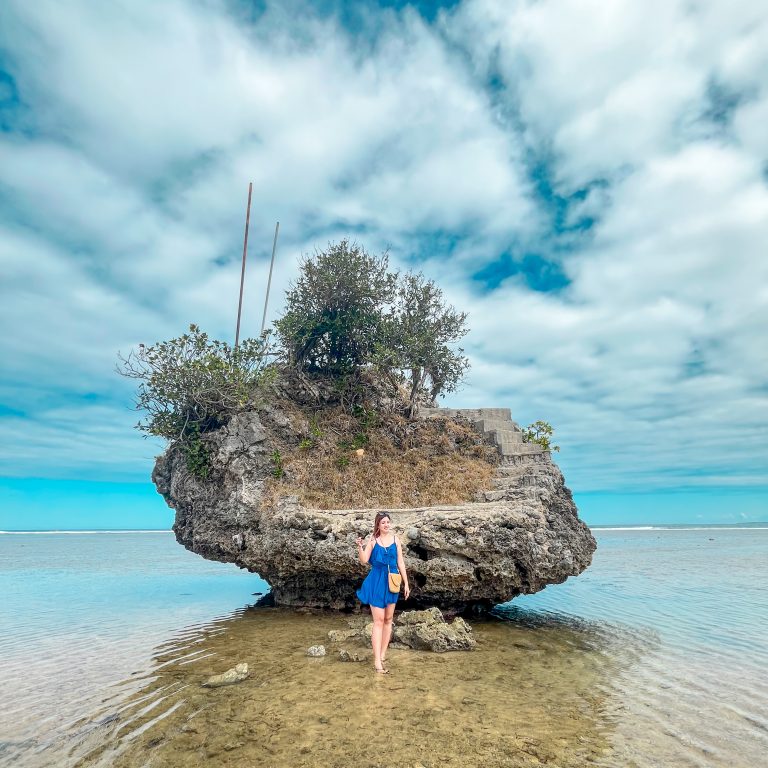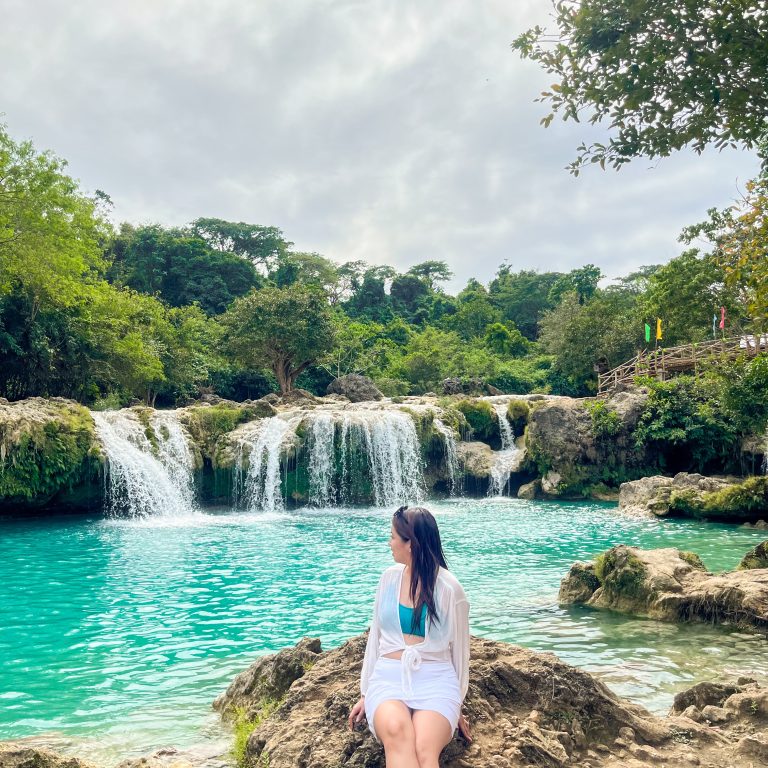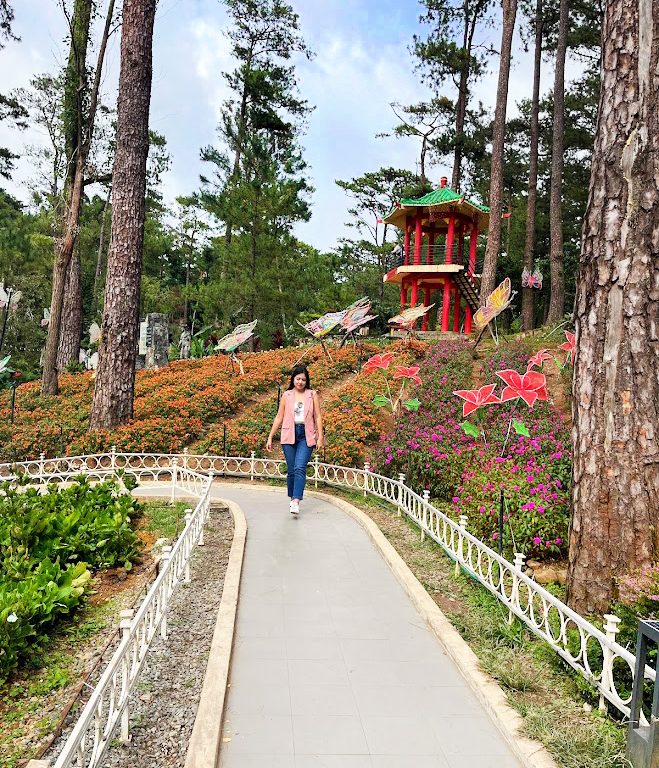Famous haunted places in the Philippines you need to visit this Halloween.
Last Updated on: 6th May 2025, 08:37 am
Halloween is almost near, and if you are looking for a spine-tingling adventure, you should check out these famous haunted places in the Philippines. From haunted hospitals to garrisons, these haunted places have a lot of history to tell and scary ghost stories that will keep you at night.


See also: Scariest travel moments I’ve experienced
Famous Haunted Places in the Philippines
Fort Santiago, Intramuros

History:
Fort Santiago has a rich history. Over the centuries, this iconic site served many purposes—first, the Spanish made it a military stronghold, then the British captured it during the Seven Years’ War, and later, the Americans turned it into a golf course after the Spanish-American War. During World War II, the Japanese converted the fort into a prison and execution site.
Why it’s haunted:
Fort Santiago’s dark history has built its reputation for paranormal activity. Jose Rizal, the Philippines’ national hero, is one of the most famous spirits here. Visitors have reported seeing his ghost near the area where he was imprisoned, and some even claim to hear his footsteps echoing along the path to his execution. Spooky, right? But that’s not all—the spirits of soldiers killed in WWII and other tortured souls still appear and, on occasion, even touch visitors.
Opening Hours:
- Monday-Wednesday and Friday: 8 AM – 8 PM
- Thursday and Weekends – 9 AM – 8 PM
Diplomat Hotel, Baguio City

History:
Originally built in 1913 as a vacation retreat for Dominican friars and nuns, it later played a much darker role during World War II as a refuge for those fleeing the Japanese invasion. Unfortunately, the Japanese forces eventually took over and made it their headquarters. After the war, the building was restored. In 1973, Diplomat Hotels, Inc. transformed it into a 33-room hotel under the management of Tony Agpaoa, a well-known entrepreneur and faith healer in Baguio. The hotel closed after Agpaoa died in 1987 and was left abandoned. In 2005, the City of Baguio took over, and renamed it Dominican Heritage Hill and Nature Park.
Why it’s haunted:
Due to the many paranormal activities reported here, Diplomat Hotel is consistently featured in horror documentaries and Halloween specials. I went here last 2016, and although I didn’t feel any presence, the temperature inside was so cold that it gave me shivers. Some of the ghostly sightings reported here are the ghosts of the priests, nuns, and soldiers killed during WWII and a black lady. Many tourists also reported ghostly cries of an infant near the fountain and a ghostly nun roaming the halls.
Opening Hours:
Monday-Sunday: 4 AM – 3 AM
Manila Film Center, Pasay

History:
This huge structure was envisioned by First Lady Imelda Marcos in 1981 and aimed to make Manila the cultural hub of Asia. However, the building’s rushed construction led to a tragic accident. The scaffolding collapsed, and workers were trapped in quick-drying cement, resulting in at least 168 deaths. Despite this, the first Manila International Film Festival took place in 1982. However, the center soon faced financial issues and rumors of a curse. After the 1986 EDSA Revolution, it fell into disrepair, and though it was later rehabilitated, it caught fire in 2013 and remains abandoned today.
Why it’s haunted:
They say that the 168 workers who died still haunt the Manila Film Center. A friend of mine once went ghost hunting near the building with her cousins (since going inside is off-limits). Suddenly, one of them heard a male voice calling her name. She turned around, but no one was there. That gave her the creeps since her cousins heard it too. Some stories also included people who have reported hearing disembodied voices, random screams, and even the sound of construction—almost as if the tragic accident is being replayed over and over.
Corregidor Island

History:
Corregidor Island, first established by the Spanish on May 19, 1570, was built to protect Manila Bay from invasions. Fast-forward to World War II, and it became a crucial fortress for American and Filipino troops. After Bataan fell on April 9, 1942, Corregidor stood as the last defense against the Japanese, enduring intense bombardment before finally surrendering on May 6, 1942. Today, Corregidor stands as a memorial to the bravery of those who fought there and is now a popular tourist destination.
Why it’s haunted:
Because of its tragic history, it’s no surprise the island has become one of the most famous haunted places in the Philippines. The Malinta Tunnel is said to be the most haunted spot on the island. Previously used as a hospital and command center during the war, many tourists have seen ghosts of soldiers and heard disembodied voices. One of the scariest stories I’ve heard is about the ghost of the headless priest. According to legend, a priest was beheaded by Japanese soldiers during the occupation, and now his ghost is said to wander the island, still searching for his missing head.
You can book available tours on the island here
Laperal White House (now Joseph’s Baguio)

History:
The Laperal White House, also known as the Laperal Guesthouse, is a historic spot in Baguio City. It was built in the 1930s by Roberto Laperal as a family vacation home. During World War II, the house was taken over by the Japanese and used as a garrison. Rumors claim that horrific acts, like torture and rape, took place within its walls, adding to its dark reputation today.
While the Laperal Family escaped the atrocities of the Japanese, tragedy struck them when they returned home after the war. One of the tragedies involved their young daughter, just three and a half years old. She reportedly wandered outside, following her nanny, who didn’t notice her stepping onto the street. Sadly, the little girl was hit by a car and died instantly. The grief-stricken nanny, overcome with guilt, is said to have taken her own life in the attic of the White House. Later, after Don Roberto’s wife and children passed away, he planned to sell the house. However, as he was leaving for the last time, he collapsed on the front steps and died.
Billionaire tycoon Lucio Tan bought the property in 2007 and renovated it, turning it into a tourist attraction. In 2013, his Tan Yan Kee Foundation transformed it into a Bamboom Museum, but it closed in 2015. Today, the house is transformed into a fine-dining restaurant named Joseph’s Baguio.

Why it’s haunted:
They say the tortured souls from the war still haunt this house, including the ghosts of Don Roberto and his wife. One of the creepiest stories I’ve heard involves a security guard who was on the phone with his wife while on duty. She suddenly heard a woman’s voice whispering, but the guard swore no one else was around him. Many psychics who visited the house also felt an evil presence, which sometimes scratched and pushed visitors.
Opening Hours:
Monday-Sunday, 11 AM – 10 PM
Teacher’s Camp, Baguio City

History:
Established on December 11, 1907, it served as a recreational and training hub for American and Filipino teachers during the colonial era. It officially opened on April 6, 1908, marking the first Teachers Vacation Assembly. The camp has evolved over the years, taking on different roles. From 1936 to 1941, it was home to the Philippine Military Academy (PMA), leading to the construction of General Luna Hall. During World War II, Japanese forces converted it into a hospital. Nowadays, Teachers’ Camp is mainly a training center for educators and a venue for events and seminars, but it also welcomes tourists when it’s not buzzing with teacher training activities.
Why it’s haunted:
Long before the Teacher’s Camp was built, it was owned by the Igorots, who are the indigenous people of Baguio. It is said that a battle occurred between the Igorots and the Americans until the Americans won and took over the camp. Since then, the ghosts of the Igorots have haunted the area, including a love-sick ghost who is said to follow women he likes and watch them sleep.
One of my friends who stayed here for training told me his own experience. He suddenly woke up at 3 AM to hear a woman sobbing and someone scratching the wall. The following day, he told his fellow teachers about his experience, and one of the staff overheard their conversation. The staff said to them that a white lady and a headless priest haunt the place, and some visitors have seen the white lady wearing a bloody white gown. Due to the number of ghost stories there, Teacher’s Camp was featured in almost all horror documentaries and vlogs.
If you want to stay at the camp yourself, you need to call their official hotlines for reservations.
Opening Hours:
Daily, 7:00 AM – 6:00 PM
Abandoned Clark Air Base Hospital

History:
Built in 1964 by the United States Air Force, this 200-bed facility was one of Asia’s most prestigious medical centers. It mainly served military personnel and casualties during the Vietnam War. However, it closed its doors in 1991 after the dramatic eruption of Mount Pinatubo, which left the hospital buried under a thick layer of volcanic ash.
Why it’s haunted:
Considered one of the most haunted places in the world, this hospital was featured in an episode of Ghost Hunters International. Both visitors and security staff have had their fair share of creepy experiences inside the hospital. People often talk about hearing unexplained voices, chilling screams, and even seeing objects being thrown around. The morgue is infamous as the most haunted spot, with eerie reports of disembodied voices begging for help.
At present, the Clark Abandoned Hospital is mostly off-limits to the public, and you need special permission from the Clark Development Corporation (CDC) to get inside. Even though the place is in ruins and trespassing can be pretty risky, it’s still a favorite spot for urban explorers and ghost hunters.
Siquijor Island

History:
Before the Spaniards colonized our country, this island was known as Katugasan, named after the sturdy molave trees, or “tugas”. It was home to Indigenous tribes who lived off farming and fishing, making the most of its natural bounty. Trade with neighboring lands, especially China, was common back then, bringing in not just goods but also cultural influences like witchcraft and faith healing—that still linger in the island’s mystique today.
Why it’s haunted:
This island gained fame due to its ghost stories and legends, becoming one of the most famous haunted places in the Philippines. Its famous ghosts include the white lady at Lazi Church. Many people have seen her in a flowing white dress drifting near the old church grounds, especially when night falls. The famous 400-year-old Balete tree is said to be the home to mythical creatures such as fairies and elves (dwende).

There are also stories of aswangs, a mythical creature in Filipino folklore often described as a shape-shifting monster or evil spirit. It is said that the local “mababarangs,” or spiritual healers, have powers that can defeat these malevolent entities.
Herrera Mansion, Tiaong, Quezon

History:
The Herrera Mansion in Tiaong, Quezon, is a true gem of history and architecture. Known as the oldest house in Tiaong, it was owned by Isidro and Juliana Herrera in the 1920s. Over the years, the mansion has seen everything—from the elegance of its early days to the devastation of World War II. Today, the mansion is abandoned, battered by bombings and years of neglect.
Why it’s haunted:
Locals have reported seeing headless Japanese soldiers wandering the grounds. There’s also the legend of an elderly couple dressed in white who are said to descend the circular staircase as if still going about their daily routine. Mysterious rattling doorknobs are heard, and sudden cold drafts are felt by those who go inside. Because of this, this mansion is featured in news and horror documentaries, making it a popular tourist spot for ghost hunters and paranormal enthusiasts.
U.P Los Banos, Laguna

History:
UPLB began as the UP College of Agriculture in 1909, founded to boost agricultural education. However, during the Japanese occupation, the campus took on a darker role, serving as an internment camp for Allied nationals. The war left UPCA in ruins, with many of its facilities and structures destroyed. In a dramatic turn of events, a U.S. rescue mission in 1945 liberated over 2,000 internees held on campus. After the war, UPLB rapidly rebuilt and, by the 1950s, emerged as a leading center for agricultural research supported by international grants and partnerships.
Why it’s haunted:
Due to its dark history, U.P Los Banos became a hotbed of ghost stories and sinister urban legends. Among the campus’s most haunted spots is Baker Hall. Students often report the foul smell of decaying bodies and eerie shadowy figures lurking at night. One chilling tale involves a group of students who peeked inside the hall and saw people dressed in old-fashioned clothes enjoying a lively party. But when they looked closer, they discovered there was no party at all—the “people” they saw were actually ghosts.
Probably one of the scariest urban legends I’ve heard is the story of two dormers inside the campus. One night, one of the dormers left for a party, so the other dormer was alone in the room. She was sleeping in the lower bunk of the bed when she suddenly woke up and saw two pairs of legs sitting on the upper bunk of the bed. Terrified, she tries to go back to sleep until she hears a child’s voice saying, “Look, Mom, the girl below us is still sleeping.” The mother replied, “No honey, she is just pretending to sleep.” After the incident, the girl went crazy and left the campus for good.
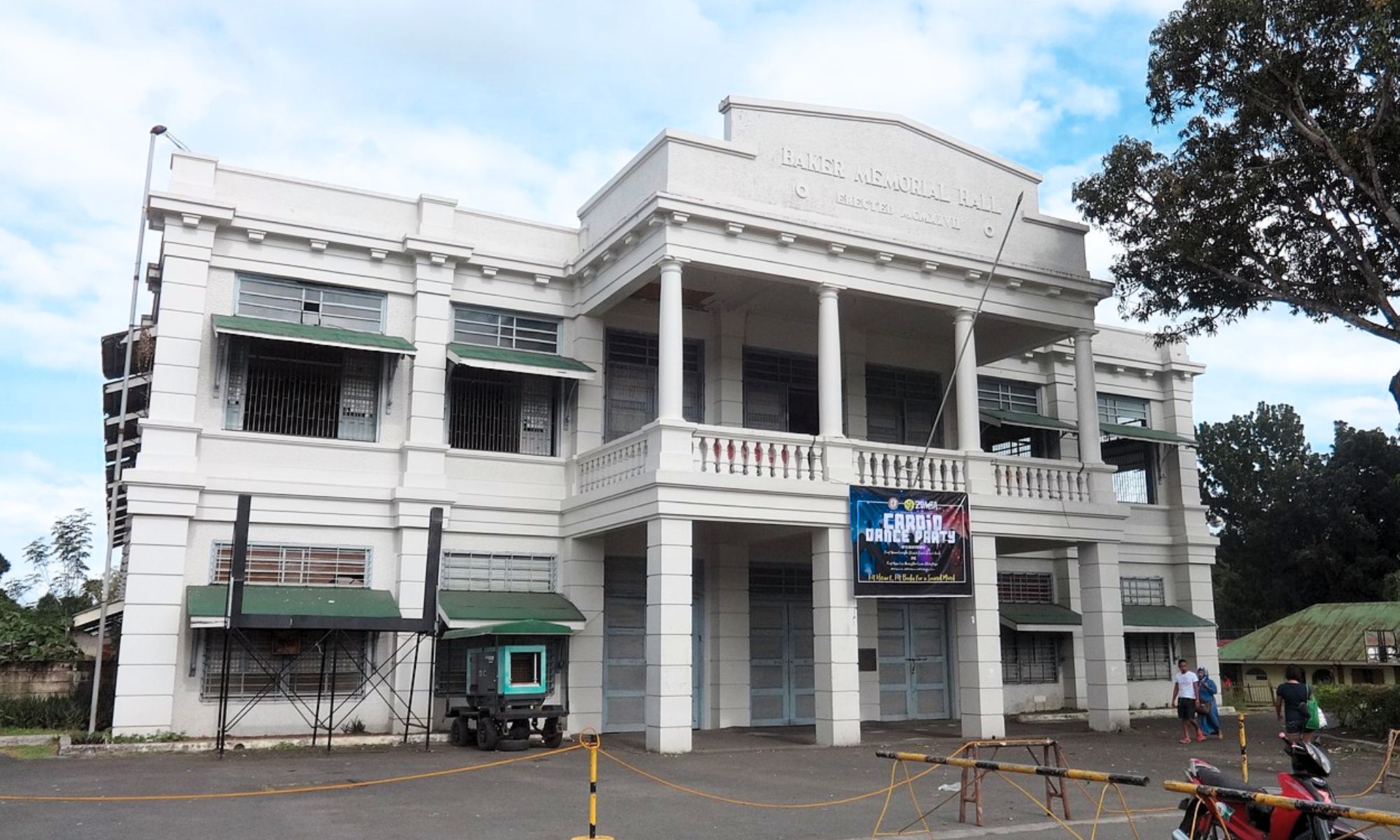
So that’s it for this list! Hopefully, I’ll get to visit all of these places (I’ve already traveled to 2/10 of this list). Do you have any recommended famous haunted places in the Philippines to visit this Halloween? Comment down below 🙂
Love this Famous haunted places in the Philippines you need to visit this Halloween post? Pin this post or give it a like!
